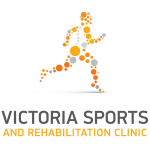With the warmer days well and truly here, everyone celebrates by getting their thongs out. Some may remember I wrote an article 3 years ago ‘Why thongs are bad for your feet.’ I delved into why they are bad for your feet but I didn’t elaborate on the impact they can have on the rest.. read more →
It’s not what you expect to hear when you come in for a treatment. You explain your lower back pain to us, indicating that you are stiff and sore in the morning, you struggle to get out of the car and can’t sit for too long and now we are telling you to exercise. The.. read more →
Great little video put together Maksym Borisov from our recent trip to ISPO in Cape Town, South Africa to present recent literature on the Chéneau-Gensingsen Scoliosis Brace. read more →
Remedial Massage is starting Tuesday 15th November. You can book online or call the clinic to make an appointment and from November 2016 until February 2017 when you buy your first remedial massage you will receive your second massage half price (please note terms and conditions apply). read more →
Do you have a dormant butt? Chris Kolba, a physical therapist at the Ohio State University Wexner Medical Center coined the term to explain to his patients that their glute muscles weren’t working efficiently. Having a dormant butt is not a new thing but it is increasing due to our sedentary behaviours that limit our.. read more →
At VSRC we regularly prescribe exercises to our patients. Our current process of writing the exercises on a sheet of paper isn’t the best, mainly due to Dan’s poor hand writing and Tracy’s interesting stick figure drawings, so we have decided to move to a software based application to make it easier and more legible.. read more →
During treatment for scoliosis with the Schroth Method and/or Cheneau-Gensingen Bracing, patients may be required to undergo a number of x-rays to assess the magnitude of their curvature. Today X-ray is still the gold standard for identifying and measuring a scoliosis.1 Researchers have calculated that scoliosis patients that have regular exposure to radiation have a.. read more →
The Risser Sign identifies the amount of ossification (the process of cartilage becoming bone) of the human pelvis as a measure of skeletal maturity. The amount of ossification is graded from 0 – 5. The process begins at the front of the pelvis and moves towards the spine. The grades are as follow: Grade 0.. read more →
The Cobb angle is an angular measure of deformity of the spine in the coronal (frontal plane). It is named after American orthopedic surgeon John Robert Cobb, who wanted to find an accurate and consistent measure for the severity of spinal deformities, in particular scoliosis. To measure the Cobb angle you need to: Identify the.. read more →
America’s main medical groups that treat scoliosis have responded to recently released research that confirms that the early and appropriate treatment for scoliosis is effective in halting or minimising the progression of spinal curvature. The joint statement, “Screening for the Early Detection of Idiopathic Scoliosis in Adolescents,” is a collaboration between the American Academy of Orthopaedic Surgeons.. read more →
